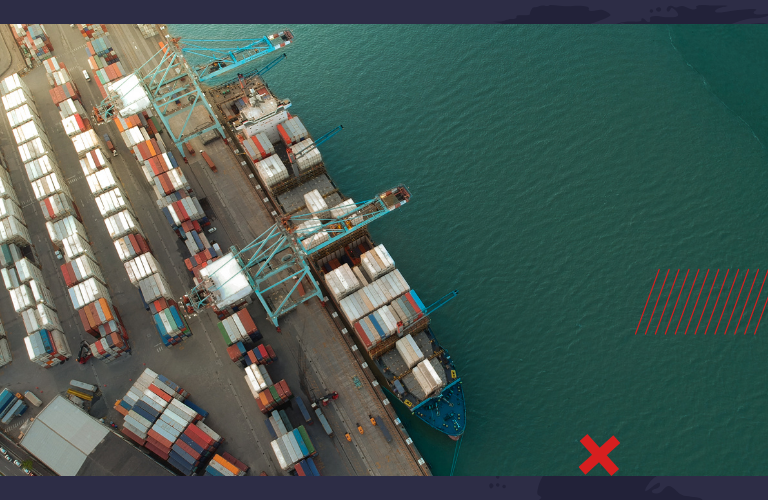What type of export finance is best for your business?

Export finance is a term often used in international trade and refers to various financial products and services that support businesses involved in international trade, specifically to help exporters manage the financial challenges associated with selling goods or services abroad. These financial solutions are crucial for covering the costs related to manufacturing, shipping, and payment collection while ensuring cash flow and managing risks like non-payment from foreign buyers. There are many types of export finance.
Types of Export Finance
- Pre-shipment finance
Pre-shipment finance is the funding provided to exporters before the shipment of goods or services to the buyer. It helps cover the costs associated with the production, procurement, and preparation of goods for export. In Pre-shipment finance, financing provided before goods are shipped to the buyer, helping the exporter produce, purchase raw materials, or manufacture the goods.
The main purpose of pre-shipment financing is to provide working capital to purchase raw materials, cover manufacturing or processing costs, to manage labour, packaging and other costs related to fulfilling the export order. Types of Pre-shipment finance include:
Packing Credit (PC): A short-term loan given to an exporter to finance the working capital needs for producing goods for export.
Advance against Export Orders: Loans provided against confirmed export orders or letters of credit (LC) to help exporters begin production.
Things to know about Pre-shipment finance:
The loan is typically short-term and lasts until the goods are shipped to the buyer, the export order itself serves as collateral and banks may require export credit insurance or guarantees before granting pre-shipment finance.
2. Post-Shipment Finance
Post-shipment finance is the funding provided to exporters after the shipment of goods. It helps bridge the gap between the time of shipment and the receipt of payment from the foreign buyer. Financing in this case is extended after the shipment of goods, helping exporters bridge the time gap between shipment and payment from foreign buyers.
Types of Post-shipment Finance
Export Bills Discounting/Negotiation: The bank buys the exporter’s receivables (such as an invoice or bill of exchange) at a discount, providing immediate cash.
Export Factoring: A financial service where the exporter sells their receivables to a factor (financial institution) in exchange for immediate cash, and the factor assumes the collection risk.
Advance against Duty Drawback: Loans provided to exporters based on the expected duty refund from customs authorities.
Things to know about Post-shipment finance
It is Short- to medium-term financing, depending on when the exporter expects to receive payment from the buyer.
Banks may require the exporter to have a letter of credit or export credit insurance to reduce the risk of non-payment by foreign buyers.
Key Differences Between Pre-shipment and Post-shipment Finance
|
Aspect |
Pre-shipment Finance |
Post-shipment Finance |
|
Timing |
Provided before the goods are shipped |
Provided after the goods are shipped |
|
Purpose |
To finance production and preparation costs |
To finance cash flow while waiting for buyer's payment |
|
Risk Covered |
Production risk and working capital needs |
Payment collection risk from buyers |
|
Common Products |
Packing credit, working capital loans |
Bills discounting, export factoring |
|
Repayment Source |
From the proceeds of the export sale |
From the buyer’s payment |
3. Trade Credit
Trade credit is a type of short-term financing in which a supplier allows a buyer to purchase goods or services on credit, with the agreement that the buyer will pay at a later date, usually after the goods or services have been delivered. This allows the buyer to receive goods and pay for them later, typically within a period ranging from 30 to 90 days, depending on the terms set by the supplier.
How trade credit works
Supplier offers goods or services: The supplier agrees to deliver goods or services to the buyer without requiring immediate payment.
Payment terms: The supplier sets a time period (e.g., 30, 60, or 90 days) within which the buyer must pay for the goods. This period is called the "credit period."
Credit period: During this period, the buyer can sell the goods, generate revenue, and use that revenue to pay the supplier by the agreed deadline.
Payment upon due date: At the end of the credit period, the buyer settles the outstanding amount either in full or based on negotiated terms.
Key takes
Interest-free
In most cases, trade credit does not involve interest charges, making it a cost-effective financing option for businesses, as long as payment is made on time.
Credit period
Common credit terms include 30, 60, or 90 days, depending on the agreement. Terms are often noted as "net 30," "net 60," or "net 90," meaning the buyer must pay within that time frame.
Discounts
Some suppliers offer discounts for early payment. For example, terms like "2/10, net 30" mean the buyer can take a 2% discount if they pay within 10 days, or pay the full amount within 30 days.
Risk of trade credit
Trade credit like any other financial mechanism comes with some risk linked to the supplier and buyer.
Supplier risks include buyers may delay payment or default entirely, which could impact their cash flow.
Buyers may overextend themselves by purchasing too much on credit, leading to financial difficulties when payments are due.
Limited availability: Trade credit is typically extended based on the buyer’s creditworthiness, so businesses with weak financial positions may struggle to obtain trade credit.
Example of Trade Credit Case:
A clothing retailer purchases inventory from a manufacturer. Instead of paying for the inventory upfront, the manufacturer offers the retailer net 60 terms. This means the retailer has 60 days to pay for the inventory. During this period, the retailer can sell the clothing, earn revenue, and use that income to pay the manufacturer.
In this way, trade credit acts as a form of "buy now, pay later" for businesses, helping them manage cash flow and continue operations without needing immediate funds.
4. Letter of Credit
Letter of Credit is a guarantee from the buyer’s bank that payment will be made on time and for the correct amount, helping to reduce the risk for exporters. A Letter of Credit (LC) is a financial document issued by a bank or a financial institution that guarantees a buyer’s payment to a seller will be received on time and for the correct amount, provided the seller meets the conditions outlined in the LC. It is commonly used in international trade to reduce the risk of non-payment or disputes between buyers and sellers across borders.
Key Features
The buyer’s bank (known as the issuing bank) provides the letter of credit to guarantee payment to the seller (beneficiary).
Payment is only made when the seller provides proof that certain terms and conditions (such as the shipment of goods or delivery of documents) have been fulfilled. These terms are outlined in the LC agreement.
The seller is assured of receiving payment if they comply with the LC's terms, regardless of the buyer's financial situation or willingness to pay. For the buyer, it ensures that payment is only made if the seller performs their obligations.
The seller must present specific documents (such as a bill of lading, invoice, certificate of origin, etc.) to the bank to prove that they have fulfilled their part of the deal. The bank will only release funds after verifying these documents.
Types of Letter of Credit
Revocable LC: The buyer or the issuing bank can modify or cancel the LC without the seller's consent. These are rare, as they offer less protection to the seller.
Irrevocable LC: Once issued, the LC cannot be changed or cancelled without the agreement of all parties involved (the buyer, seller, and issuing bank). This is the most commonly used LC because it offers greater security.
Confirmed LC: A second bank, usually in the seller's country, confirms the LC and guarantees payment if the issuing bank fails to pay. This adds another layer of security for the seller, particularly in international trade.
Unconfirmed LC: Only the issuing bank guarantees the payment, and there is no additional bank involved. The seller relies solely on the issuing bank’s creditworthiness.
Sight LC: Payment is made immediately when the seller presents the required documents and the bank verifies them.
Usance (Deferred Payment) LC: The payment is made after a specified period, usually 30, 60, or 90 days after the documents have been accepted.
How a Letter of Credit Works:
Buyer and seller agree on terms: Both parties negotiate the contract terms, including using a letter of credit.
Buyer applies for LC: The buyer requests their bank to issue a letter of credit in favour of the seller.
Issuing bank sends LC to seller’s bank: The buyer’s bank sends the LC to the seller’s bank (known as the advising bank), which notifies the seller.
Seller ships goods: The seller ships the goods as specified in the agreement and prepares the required documents.
Presentation of documents: The seller presents the necessary documents (proof of shipment, invoice, etc.) to their bank, which forwards them to the issuing bank for verification.
Verification and payment: Once the issuing bank verifies the documents, it releases payment to the seller’s bank, which then transfers the funds to the seller.
Buyer receives goods: The buyer pays the bank, receives the goods, and takes ownership after customs clearance or other formalities.
Benefits of a Letter of Credit
Reduces risk for both parties:
For the seller: The risk of non-payment is minimized as the bank guarantees payment if the LC terms are met.
For the buyer: Payment is only made after the seller fulfils their obligations.
Improves trust in international trade: The LC ensures security in transactions between parties from different countries, even if they don’t have a long-standing business relationship.
Ensures compliance with trade terms: The seller must meet specific terms (shipping deadlines, correct documentation, etc.), ensuring the buyer receives the correct goods.
Supports cash flow: Sellers can use an LC to obtain post-shipment finance from their bank by discounting or negotiating the payment due under the LC.
Case study of a letter of credit
A US-based company orders machinery from a manufacturer in Germany. The US buyer asks its bank to issue an irrevocable letter of credit in favour of the German manufacturer. The manufacturer agrees to ship the machinery based on this LC.
The manufacturer ships the goods and presents the shipping documents (e.g., bill of lading, insurance documents, commercial invoice) to their local bank in Germany.
The German bank verifies the documents and forwards them to the US bank.
The US bank checks the documents, confirms they meet the LC’s terms, and releases the payment.
The German bank receives the funds and transfers them to the manufacturer, while the US buyer pays its bank after receiving the goods.
In this way, both parties have security in the transaction, and the bank acts as a trusted intermediary.
Export Finance General Requirements for businesses
Export Contract: A legally binding agreement between the exporter and the buyer that outlines the terms of the export deal (quantity, price, delivery, and payment terms).
Documentation: Essential export documents such as invoices, shipping documents (bill of lading), certificates of origin, packing lists, and export licenses.
Payment Terms: Clear definition of payment terms (e.g., Letter of Credit, documentary collections, open account, or advance payment), outlining when and how the exporter will be paid.
Creditworthiness of Buyer: Information or assessment of the foreign buyer's financial stability, often checked via credit reports or insured through export credit agencies (ECAs).
Currency Risk Management: Exporters may need to protect themselves from exchange rate fluctuations through forward contracts, currency hedging, or insurance.
Government Support: Exporters may require support from government programs like export incentives, subsidies, and guarantees (e.g., Export-Import Bank (EXIM) services).
Collateral or Security: Banks or financial institutions often may require collateral or guarantees to secure export finance.
Risk Mitigation Strategies: Strategies like export credit insurance or letters of credit to safeguard against risks of non-payment, buyer insolvency, or political instability in the buyer's country.
Each of these elements plays a role in reducing risks and ensuring smooth international trade transactions.
- News
- Funding
- Startups
- Finance
- Tender 360
- Insurance
- Banking
- Payments
- Trade
- Forex
- Sanctions
- Compliance
- Crypto
- Customs
- Policy & Data
- Regulations
- Export Guide
- Market Trends
- Other


